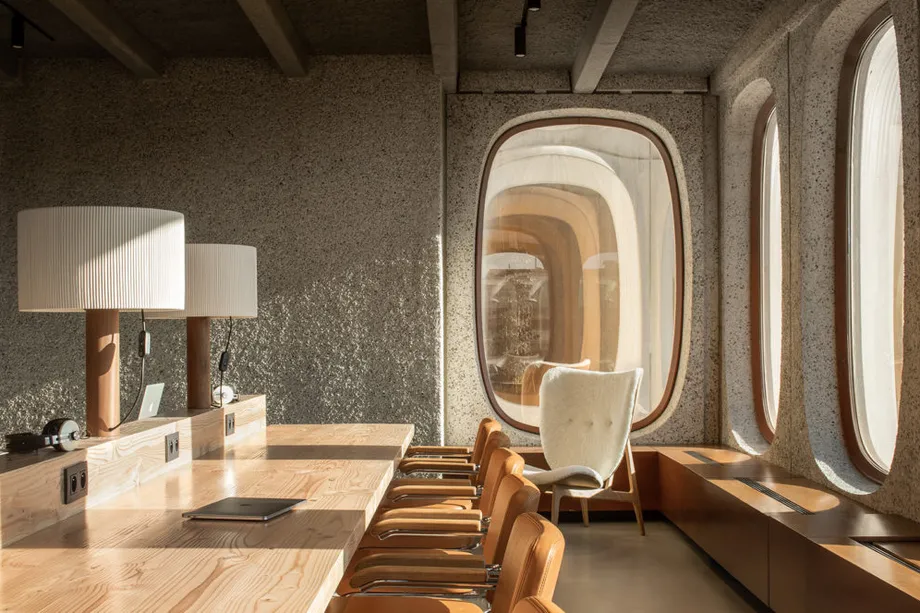Beyond Concrete: Accepting the Brutalist Style
Many people have misinterpreted brutalist architecture for a long time because it uses exposed concrete in a stark, raw, and unapologetic way. This architectural style is making a big comeback, especially in office architecture, even though it is often linked to chilly, administrative structures. But how can you change a style that is known for its “raw concrete” (béton brut) into a room that seems warm, friendly, and good for getting work done? The secret is to make design choices that balance the natural strength of Brutalism with things like softness, texture, and light.
:no_upscale()/cdn.vox-cdn.com/uploads/chorus_asset/file/13620299/cowork3.jpg)
The Main Ideas Behind Brutalist Interior Design
It’s crucial to know the basics of Brutalist interior design before we talk about how to make the look softer. This approach isn’t about adornment; it’s about being honest and honouring the resources.
Raw Materials: The main material is plain concrete, which usually has apparent formwork marks. They use steel, glass, wood, and brick in their most natural state.
Geometric Shapes: Brutalism is characterised by robust, angular, and occasionally asymmetrical shapes. These shapes give the impression of being big and strong.
Exposed Structure: The building’s structure is the decoration. The building’s functionality is highlighted by leaving pipes, ducts, beams and columns visible on purpose.
Minimalism with a Purpose: There isn’t much decoration. The furniture, lighting, and other things in the room are all picked for their purpose and form, not for how pretty they are.
Monochromatic Palette: The colour scheme is usually muted, using hues of grey, black, white, and earthy tones to let the materials’ shapes and textures shine.
:no_upscale()/cdn.vox-cdn.com/uploads/chorus_asset/file/13620301/cowork4.jpg)
Adding Warmth: The Art of Brutalist Balance
The hardest part of a Brutalist office is making sure the area doesn’t feel cold and sterile. The idea is to make a dynamic tension between the big and the little, the hard and the soft.

Modern New York Office Design
Add Natural Wood and Organic Materials
Adding natural wood is the best method to make a place with a lot of concrete feels warmer. For floors, desks, and shelves, use light-coloured woods like maple or ash to make a natural, welcoming contrast. Think of putting a big, live-edge wood conference table in the middle of the room. Add other natural materials, such leather, wool, and rugs made of natural fibres, to the wood. A big, soft rug may make a concrete floor feel softer right away, both visually and acoustically.

Source: dornob.com
Use Strategic Lighting
Lighting is very important for setting the mood. Instead of using bright, overhead fluorescent lights, use a layered approach.
Warm Tones: Choose LED bulbs with a colour temperature between 2700K and 3000K to give out a gentle, inviting light.
Sculptural Fixtures: Pick pendant lights with exposed bulbs or metal frames that go with the raw look.
Task Lighting: Give each person their own desk lamp to make the space feel more intimate and comfortable and to help their eyes.
Hidden Illumination: Use cove lighting or uplighting to graze textured concrete walls. This will draw attention to their particular flaws and give the room a more dramatic and deeper feel.
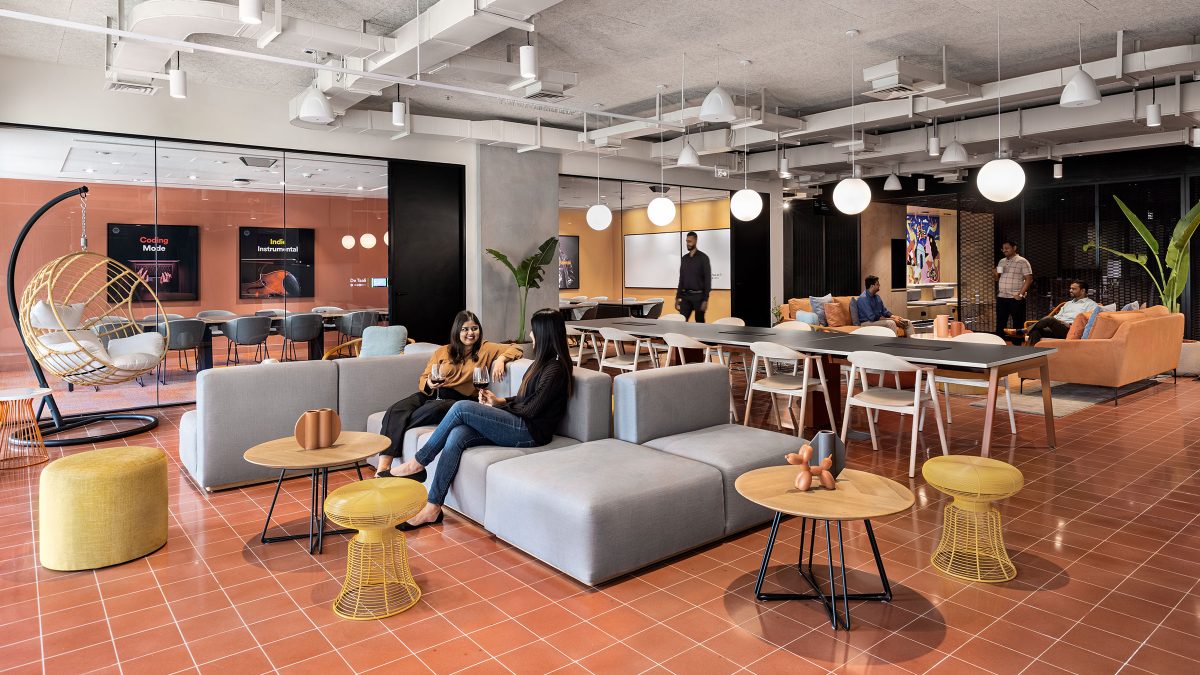 Media Company, Mumbai
Media Company, Mumbai
Add Colour and Life
A Brutalist colour scheme is usually one colour, but you need to add colour to keep the area from becoming lifeless. You can do this by:
Art: To make your concrete walls more interesting, hang big, colourful abstract paintings or murals on them.
Upholstery: Choose furniture with rich, colourful textiles, such deep blues, burnt oranges, or forest greens for the upholstery.
Plants: A single big ficus or a bunch of trailing plants may make a bare space feel more alive and peaceful. Vertical gardens and living walls are great ways to bring nature into a big space.
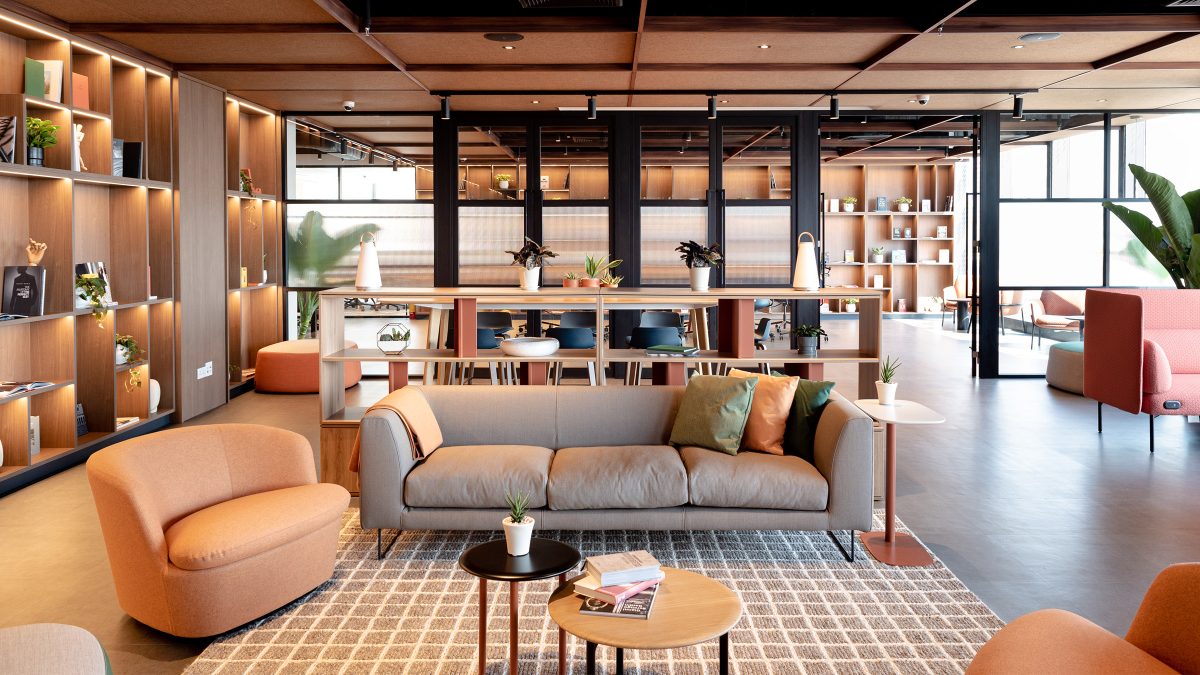 Vattanac Capital, Phnom Penh
Vattanac Capital, Phnom Penh
Use Textiles to Soften
Textiles are important for giving comfort and warmth. In addition to rugs, you could also use drapes made of soft, flowing materials to make big windows look softer. You can also make the place feel more like a home and less like an institution by putting throw blankets on the sofas and attractive pillows on the chairs. These things give a much-needed touch to the hard surfaces of concrete and steel.
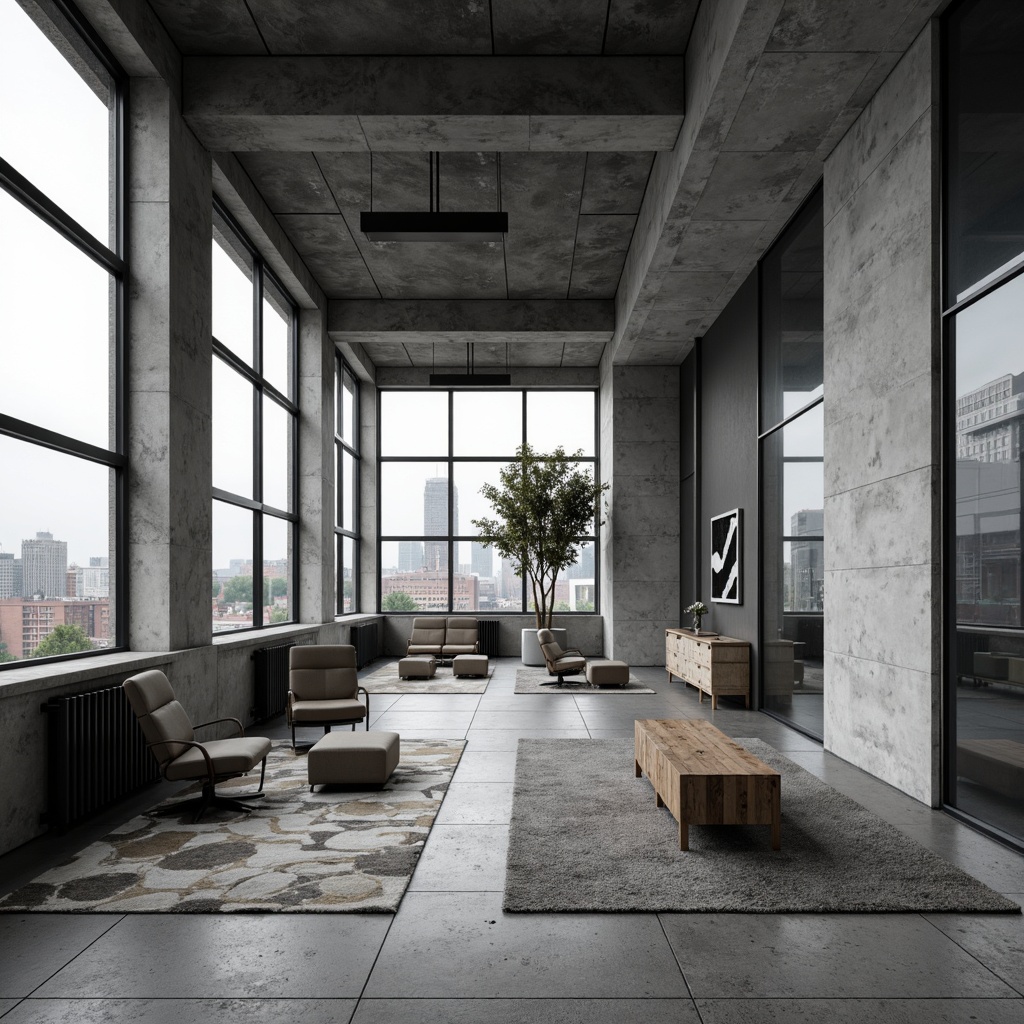 Source: promeai.pro
Source: promeai.pro
Choose Functional, High-Quality Furniture
The furniture in a Brutalist office should be just as honest and useful as the building itself. Look for pieces with straight lines and solid, blocky shapes that are similar to the building’s geometric shapes. Steel, concrete, and rough wood are all good materials to use. Ergonomic chairs and comfy sitting are a must because they show that the people who live there care about their health and well-being, which balances the harsh look with practical care.
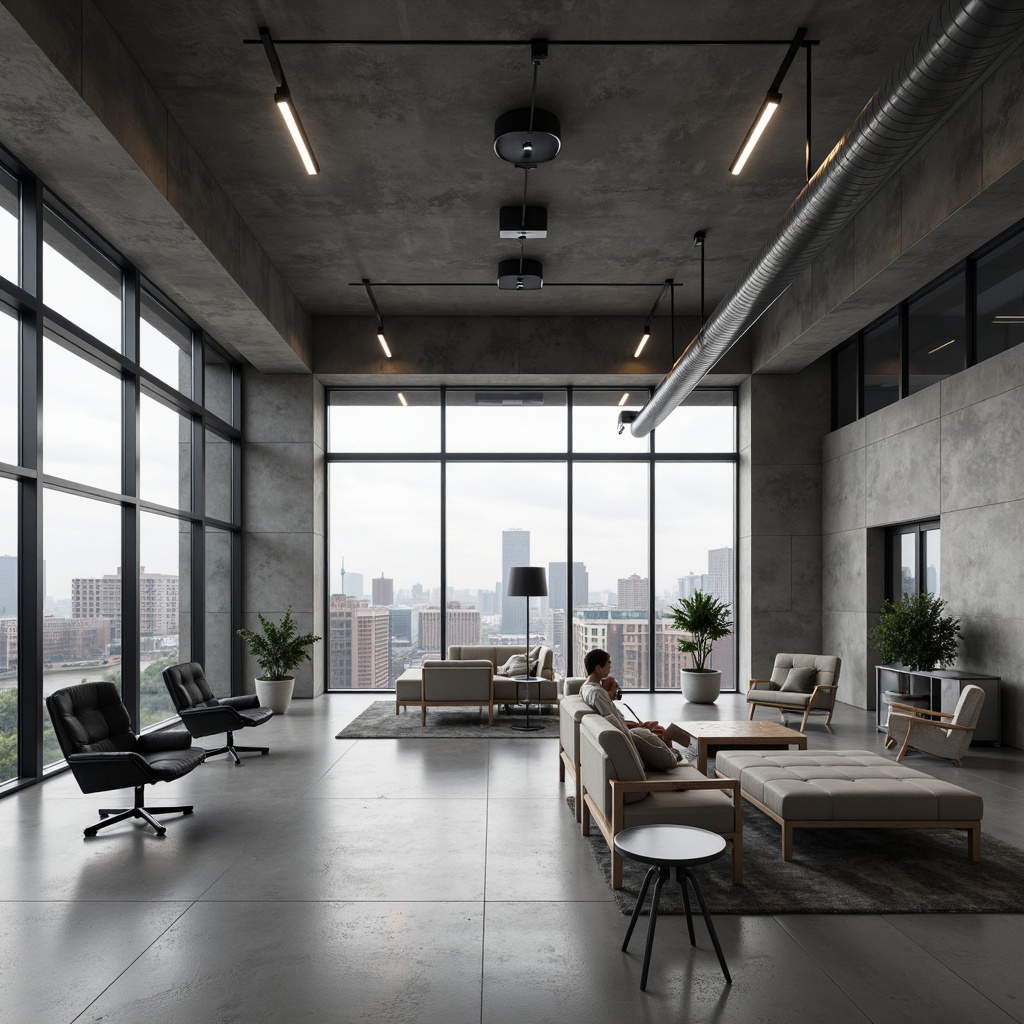
Source: promeai.pro
Questions and Answers (FAQs)
Q: Is Brutalist workplace design too frigid for a place to be creative?
A: Not at all. The most important thing is to find a balance between the style’s raw honesty and warm touches like natural wood, bright art, and soft fabrics. This makes the space exciting and motivating, honouring both function and art.
Q: What can I do to make my Brutalist office more inviting for clients?
A: Pay attention to the entryway and the common spaces. Make a spectacular piece of furniture or a significant piece of art the centre of attention. Make sure the seats are comfy and welcoming. Using warm lighting and plants in a smart way can help provide a strong first impression.
Q: Is Brutalism a design decision that will last?
A: Yes. Brutalism focusses on using strong, rough materials like concrete and steel that last a long time and need little upkeep. The style’s emphasis on honest materials and long-lastingness fits well with modern ideas about sustainability.
References:
Brutalism Style Office Buildings Design Ideas
Embracing Brutalist Elements: Transforming Contemporary Office Spaces – Architecture Adrenaline
For more content like this CLICK HERE!!

